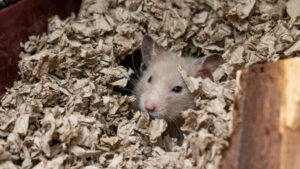
7 Best Hamster Cage For Syrian Hamster
Finding the best hamster cage for Syrian hamster is crucial, as these curious, low-maintenance, and independent pets thrive in the right environment. The primary concern
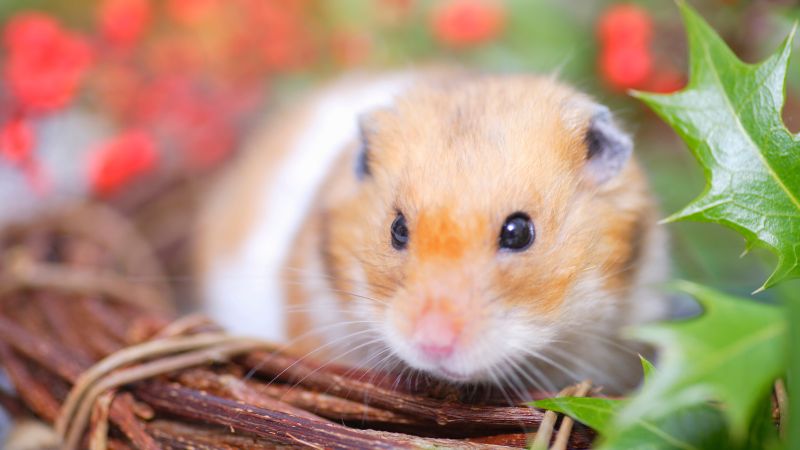
Traveling with a pet hamster isn’t as straightforward as it might seem. It requires careful consideration of your pet’s safety, comfort, and the logistics involved.
This article provides a thorough guide on how to travel with a hamster cage, ensuring a smooth and stress-free journey for both you and your furry friend.
Traveling with a hamster can be a bit of a challenge, but with the right preparation, it’s definitely doable. Whether you’re moving to a new city or going on a vacation, the key is to understand your hamster’s needs and plan accordingly.
When you’re hitting the road (or the skies) with your hamster, packing the right items is crucial for their comfort and safety. Here’s a checklist to ensure you’ve got everything covered:
If possible, transport your hamster in their usual cage. This familiar environment can greatly reduce stress, so consider using travel cage a few days before the trip for them to get used to it. The cage should include:

Inside the travel carrier, include his regular food, a baby carrot for hydration, and a toilet paper roll. The role serves dual purposes – a cozy hiding spot and a chew toy. These items will keep your hamster content for about 6 to 8 hours.
If your hamster is on any medication, pack enough for the entire trip, plus a little extra. It’s always better to be over-prepared, especially if there are unexpected delays.
Pack a variety of hamster-friendly snacks. These not only serve as a distraction but also keep your hamster’s energy levels up. Think about small pieces of fruits or vegetables, but be mindful of their regular diet and any dietary restrictions.
A small first aid kit can be a lifesaver. Include:
Messes are inevitable, so be prepared with:
If your hamster has a favorite blanket or toy, bring it along. Familiar scents and objects can significantly reduce stress and provide comfort in unfamiliar environments.
If you’re traveling long distances or across borders, bring any necessary documentation, such as health certificates or proof of vaccinations.
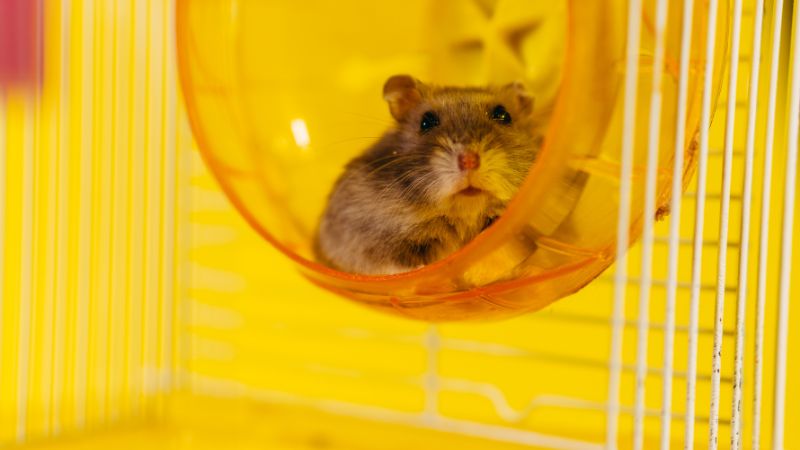
Taking a road trip with your hamster can be a fun adventure, but it’s important to prioritize their safety and comfort. Here’s how to ensure a smooth ride for your furry companion:
Securing the cage: The best spot for the hamster cage is on the floor behind the front passenger or driver’s seat. This position minimizes the risk of the cage moving or tipping over during sudden stops or turns. If the floor isn’t an option, secure the cage on a seat with a seatbelt, ensuring it’s snug and stable.
Avoiding direct sunlight and air conditioning: Hamsters are sensitive to temperature changes. Place the cage in a spot where it won’t be in direct sunlight, which can cause overheating. Similarly, avoid direct blasts of air conditioning, as too much cold air can be just as harmful.
Regular stops: Plan to stop every couple of hours to check on your hamster. This is a good time to offer fresh water, check the food, and ensure the cage’s temperature is comfortable. It’s also an opportunity to clean up any messes.
Monitoring the environment: Keep an eye on the car’s internal temperature. Even if you’re comfortable, remember that your hamster might have different needs.
Traveling at night: Hamsters are nocturnal, so traveling at night might align better with their natural schedule. They might be more relaxed and less stressed when it’s dark outside.
Familiar sounds: A quiet environment is ideal, but a bit of soft, familiar background noise, like a low-volume radio or a playlist, can be soothing for your pet.
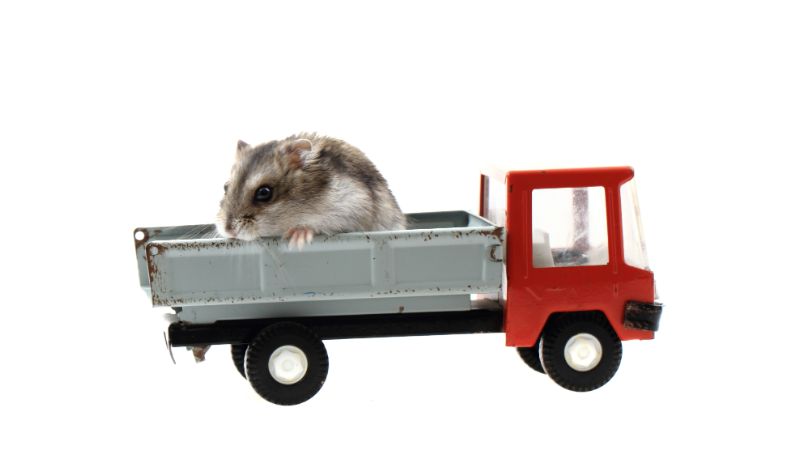
Flying with a hamster requires a bit more preparation due to varying airline policies and the complexities of air travel. Here’s what you need to know:
Check airline policies: Before booking your flight, contact the airline to inquire about their pet policy. Some airlines allow small pets in the cabin, while others may only transport pets in the cargo hold. Policies can also vary regarding cage size, fees, and documentation.
Health certificate: Many airlines require a health certificate from a vet, confirming that your hamster is fit to travel. This is usually obtained within a certain time frame before your departure.
Appropriate carrier: Airlines have specific requirements for pet carriers. They usually need to be secure, ventilated, and of a certain size. Soft-sided carriers are often preferred for cabin travel.
Fees and reservations: Be prepared to pay a pet fee. Also, some airlines have a limit on the number of pets allowed in the cabin per flight, so make your reservation early.
Preparing for security: At the airport, you’ll need to go through security with your hamster. This might mean taking them out of their carrier, so have a plan for how to safely handle them during this process.
Consider the cabin environment: The cabin’s pressure and temperature can fluctuate, which can be stressful for small animals. Ensure your hamster’s carrier is well-ventilated and insulated against potential temperature changes.
Feeding and watering: Feed your hamster before the flight, but be mindful of overfeeding. Attach a water bottle to the carrier, and consider water-rich vegetables like cucumber to help keep them hydrated.
Direct flights: Whenever possible, book a direct flight to minimize the stress of transfers and lengthy travel times.
Traveling with a hamster can bring up a lot of questions, especially if it’s your first time.
To help you prepare and ease your concerns, we’ve compiled a list of frequently asked questions that hamster owners often have when planning a trip with their pets.
A: Keep their environment as quiet and stable as possible. Familiar bedding and a dark, covered cage can also help. Avoid frequent handling, as this can increase stress.
A: This depends on the airline. Some allow small pets in the cabin, while others may not permit pets at all. Always check with the airline beforehand and understand their specific pet travel policies.
A: Stick to your hamster’s regular feeding schedule as much as possible. However, for longer trips, you might need to adjust feeding times based on when you can safely access the cage.
A: Signs of stress include excessive grooming, biting the cage, aggression, or changes in eating and bathroom habits. If your hamster is hiding more than usual or seems lethargic, these could also be signs of stress.
A: The best way is to place the cage on the floor behind a seat where it won’t slide around. Avoid placing the cage on the seat itself, as it can become a projectile if you have to stop suddenly. Also, ensure the cage is not in direct sunlight or in the path of strong air conditioning.
Traveling with a hamster requires some extra thought and preparation, but it’s definitely possible to do it safely and comfortably. Remember, every hamster is different, so what works for one might not work for another.
Always prioritize your pet’s comfort and safety, and you’ll both have a much more enjoyable and safer journey.


Finding the best hamster cage for Syrian hamster is crucial, as these curious, low-maintenance, and independent pets thrive in the right environment. The primary concern

When I began, the task of selecting essentials for a natural hamster habitat was daunting. To ease this process, I’ve assembled an exclusive set of

Have you ever wondered, “Are hamsters happier in bigger cages?” Generally YES. It’s a question that might seem straightforward, but there’s more to it than

Hamsters, the small, furry, and often nocturnal creatures, have been popular pets for many years. They are known for their playful nature and ease of

Traveling with a pet hamster isn’t as straightforward as it might seem. It requires careful consideration of your pet’s safety, comfort, and the logistics involved.
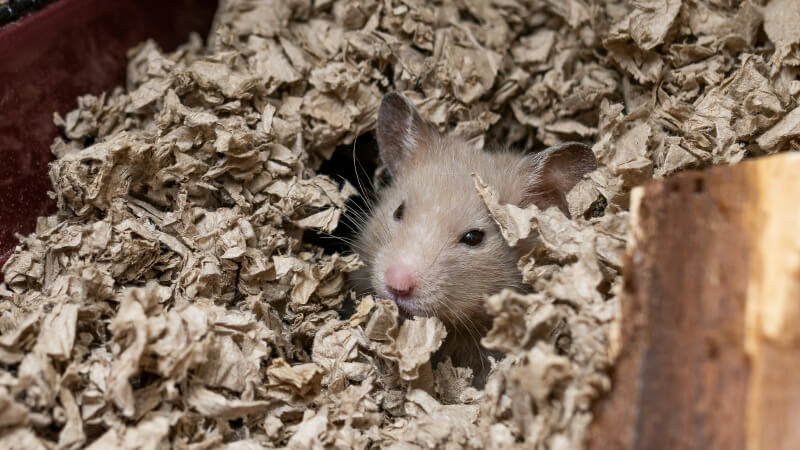
Finding the best hamster cage for Syrian hamster is crucial, as these curious, low-maintenance, and independent pets thrive in the right environment. The primary concern

When I began, the task of selecting essentials for a natural hamster habitat was daunting. To ease this process, I’ve assembled an exclusive set of

Have you ever wondered, “Are hamsters happier in bigger cages?” Generally YES. It’s a question that might seem straightforward, but there’s more to it than